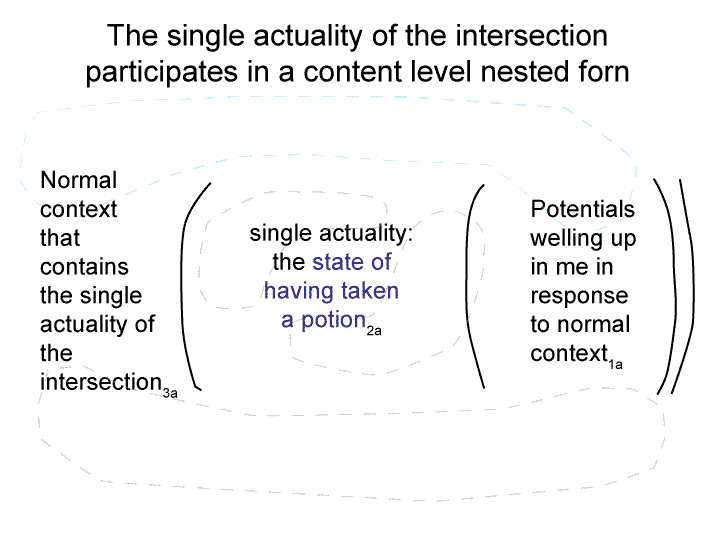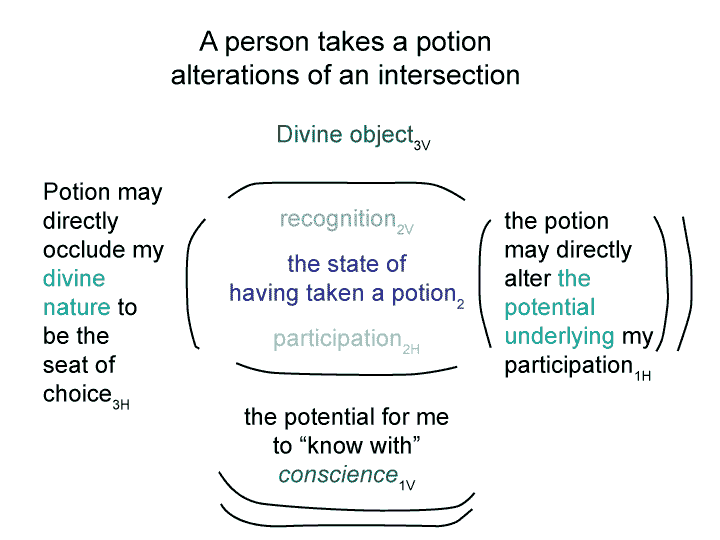Man and Sin by Piet Schoonenberg (1964) 2.1FD-2
[Next, go to the single content-level nested form (2.1 FC): The potion does not alter ‘the nested form containing the intersection’.
For the nested form containing the intersection, (let me imagine that) the normal context is ‘a tradition of guidance by shamans’. The person who took the peyote is under the watchful eye of an experience shaman (one who knows how to fly). Taking the peyote does not alter the container that the novice is in. It does not alter the potential of the novice in response to the shaman’s guidance. The shaman and the novice may be regarded as a shamanistic dyad.]


